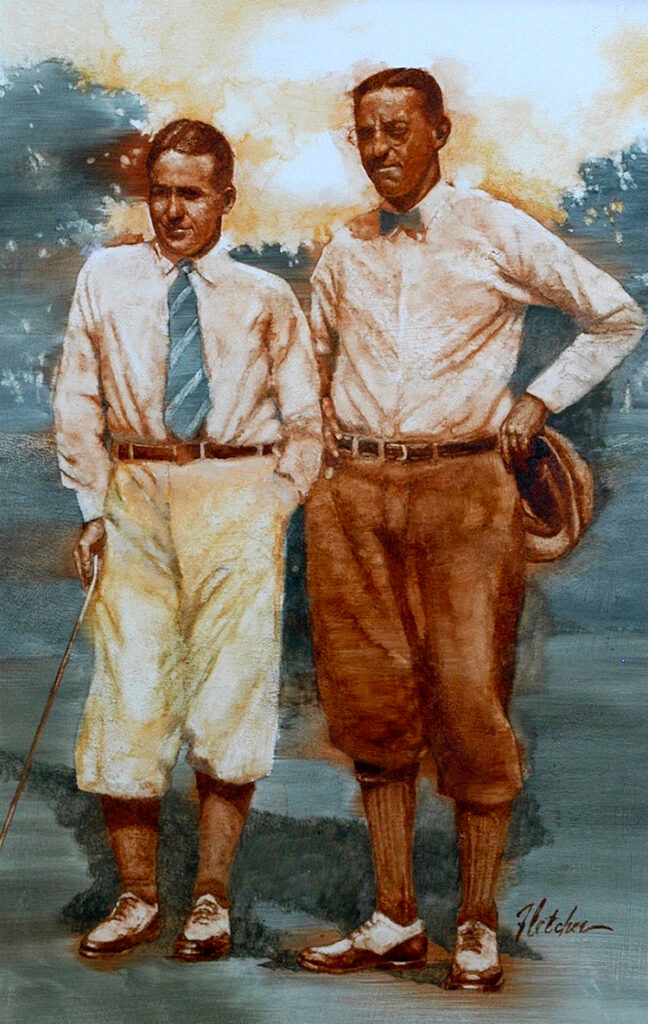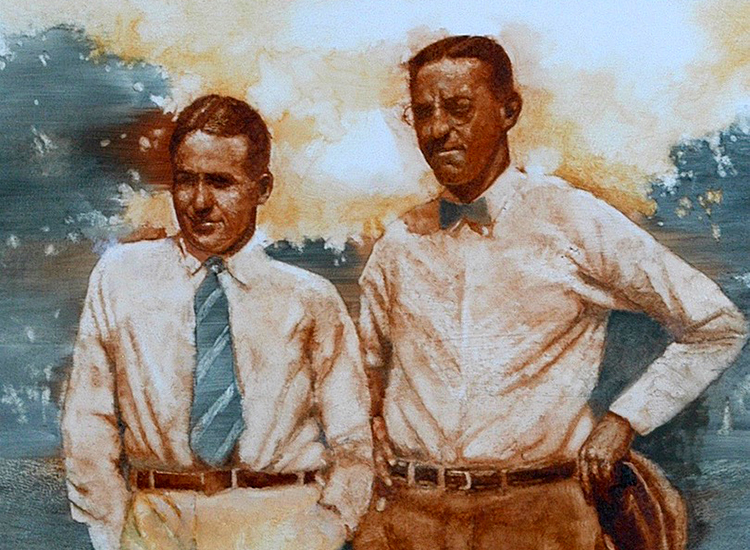
By Frank Cantrel Jr.
It began with Francis Ouimet at the 1913 U.S. Open — here’s how it’s described at the World Golf Hall of Fame:
They were the shots heard ’round the world, and they, too, started a revolution. At the 1913 U.S. Open at The Country Club, Francis Ouimet, a 20-year-old former caddie, didn’t just beat British legends Harry Vardon and Ted Ray; he changed the perception of an entire sport.
Ouimet’s stunning triumph captured the imagination of sports fans across the globe, sweeping away the notion that golf was a stuffy game for the old and rich. Ouimet was American golf’s first great hero, and he remains one of the most beloved figures in the sport’s history.
Jones’ contribution came later, culminating with his capture of the Grand Slam in 1930. Again, from the World Golf Hall of Fame:
More than any player in history, Bobby Jones is the model of the complete golfer. Supremely gifted, Jones was also a man of vast intelligence and profound character, and he merged all three forces to become not only a singular champion, but a genuine hero. Wrote Herbert Warren Wind, “In the opinion of many people, of all the great athletes, Jones came the closest to being what we called a great man.”
As a golfer, Jones was a giant. In the 1920s, he was “an ultra-athlete,” according to writer and historian Charles Price, “recognized at being better at his game than any other athlete was at his.” While there is no doubt Jones is the finest amateur golfer the game has ever produced, there’s a strong argument that he was the greatest golfer, period. Beginning with his victory in the 1923 U.S. Open at Inwood and ending with his U.S. Amateur victory at Merion in 1930, Jones won 13 championships in 20 tries, the most imposing run of major titles the game has ever seen.
Enjoy this video that shares artifacts that once belonged to both of these legendary golfers, now housed at the USGA museum: https://www.youtube.com/watch?v=LHM-VtDrZSM
The artist, Robert Fletcher, a Chicago native, spent almost 40 years in the fields of graphic design and illustration. He painted and sculpted during that time and now continues as a full-time fine artist.
Fletcher completed a commissioned sculpture of Arnold Palmer for Cherry Hills Country Club to commemorate Palmer’s victory there in the 1960 U.S. Open. Later, a smaller sculpture of the same pose was commissioned. Number one of that edition was purchased for Mr. Palmer and resides in his Latrobe, Pennsylvania collection. Fletcher has received awards of recognition both regionally and nationally. His work has graced the cover of the GHS quarterly journal The Golf. For information, visit his website: https://www.robertfletcherart.com

